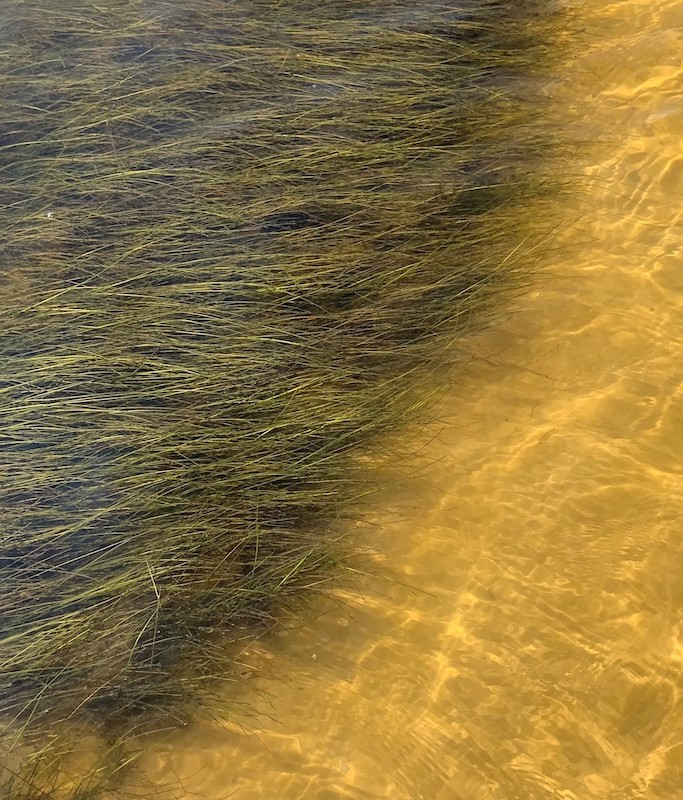Full Title: Building resilience into seagrass bed restoration: The role of genetic variation
This project worked to reduce the uncertainties of seagrass restoration by considering the impacts of genetic variation in remaining seagrass beds.
Lead Investigator: T. Erin Cox, University of New Orleans, tecox@uno.edu
Natural Resource Managers: Matt Posner and Whitney Scheffel, Pensacola & Perdido Bays Estuary Program
Project Team: Nicola Anthony (University of New Orleans), Anastasia Konefal (University of New Orleans), and Just Cebrian (Mississippi State University)
Federal Program Officer/Point of Contact: Frank Parker (frank.parker@noaa.gov)
Award Amount: $121,081
Award Period: September 2021 – August 2023
Why it matters: Seagrass beds provide important ecosystem services — they reduce erosion during storm surges, provide habitat for commercially important fish species, and sequester carbon. Seagrasses are threatened by natural and human factors, including changes in water quality that are driven by environmental change. Managers are planning restoration projects amid growing environmental uncertainties, and one way to increase the success of seagrass restoration is to better understand the genetic diversity of existing beds. Genetic diversity is the amount of variation in genetic makeup of individuals within a population. Increased genetic diversity is often associated with increased production and longevity in seagrass populations. There is a need to reduce uncertainties regarding seagrass conservation and restoration in the Gulf.
What the team did: The project team conducted two surveys, wrote a literature review, and hosted a workshop on seagrass restoration. A survey of people who use the Pensacola and Perdido Bays estuary system was done to gauge how they valued, perceived, and used seagrass beds. A survey of resource managers and researchers gathered perceptions, needs, and current practices on the use of genetic information to inform seagrass conservation and management. The team conducted a literature review to compile the results of past studies and assessed whether more diverse populations of seagrass, corals, mangroves, kelps, and marsh plants were more productive. Finally, the team hosted a one-day workshop centered on developing strategies that considered genetic variation in the management of seagrass beds in the Gulf.
Summary of outcome: The team of natural resource managers and researchers co-produced an action and applicability plan to address the management decision of how to make restored seagrass beds more resilient. The plan the project team proposed includes mapping of seagrass genetic diversity across the northern Gulf to determine population connectivity; examining the relationship between genetic diversity, primary productivity, and resiliency at three northern Gulf sites; and developing and conducting restoration trials in the Pensacola and Perdido Bays estuary system. To ensure applicability, they proposed to use their plan to implement restoration of a seagrass bed in Pensacola and Perdido Bays and hold yearly workshops to bring communities together to share knowledge.
Konefal, Anastasia; Kirkland, Amanda; Gilpin, Rebecca et al. (2024). The relationship between genetic diversity, function, and stability in marine foundation species [Dataset]. Dryad. https://doi.org/10.5061/dryad.qrfj6q5mk
Not applicable
Not applicable
 Official websites use.gov
A .gov website belongs to an official government organization in the United States.
Official websites use.gov
A .gov website belongs to an official government organization in the United States.
 Secure .gov websites use HTTPS
A lock or https:// means you’ve safely connected to the .gov website. Share sensitive information only on official, secure websites.
Secure .gov websites use HTTPS
A lock or https:// means you’ve safely connected to the .gov website. Share sensitive information only on official, secure websites.

